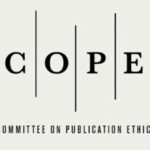Mariam Adnan Ibrahim ✉
Environment Pollution and Treatment, College of Education for Pure Sciences
Department of Biology, University of Tikrit, Iraq
Received: Aug 29, 2022/ Revised: Sept 23, 2022/ Accepted: Sept 30, 2022
(✉) Corresponding Author: mariamadnan@tu.edu.iq
Abstract
The study included the knowledge of the active chemical components present in the Nigella sativa seeds and the use of its water and alcohol extracts in a previously unused field, which is the treatment of hospital sewage, through the inhibition of some types of pathogenic bacteria .Where the study showed that the solutions of the aqueous and alcoholic extracts showed the presence of anthraquinone, alkaloids, amino acids, tannins, Saponins, flavonoids, protein, steroids, terpenoids , and the absence of carbohydrates and glycosides. The results showed the presence of functional groups such as amines, alkanes and acids, and the effect of aqueous and alcoholic extracts on different types of microorganisms was studied, and it was noted that the concentration (100) mg/ml of the aqueous and alcoholic extract had an effective effect towards inhibiting the microorganisms under study.
Keywords: Treatment, Nigella sativa, Aqueous and Alcoholic Extract, Wastewater
References
Abubakar, A. R., & Haque, M. (2020). Preparation of medicinal plants: Basic extraction and fractionation procedures for experimental purposes. Journal of pharmacy & bioallied sciences, 12(1), 1.
Al Janabi, Alaa Adnan Abbas (2013) Study of the Toxic Effect of Aqueous and Alcoholic Extracts of Plant Leaves Oleander L. Oleander Nerium in Rootworm Larvae Meloidogyne Incognita (Kofoid & White) Chitwood and Some Non-Target Neighborhoods. Ministry of Higher Education and Scientific Research. Karbala University Education Structure for Pure Sciences – Department of Life Sciences.
Al-Ali, A., Alkhawajah, A. A., Randhawa, M. A., & Shaikh, N. A. (2008). Oral and intraperitoneal LD50 of thymoquinone, an active principle of Nigella sativa, in mice and rats. J Ayub Med Coll Abbottabad, 20(2), 25-27.
Al-Sa’aidi, J. A. A., Al-Khuzai, A. L. D., & Al-Zobaydi, N. F. H. (2009). Effect of alcoholic extract of Nigella sativa on fertility in male rats. Iraqi Journal of Veterinary Sciences, 23.
Asakawa, Y., Ludwiczuk, A., & Nagashima, F. (2013). Chemical constituents of bryophyta. Chemical Constituents of Bryophytes, 563-605.
Bektaş, Z. H., Savaşer, S., Akçimen, U., Ceylan, M., Yener, O., & Bulut, C. (2019). Using of black cumin seed powder (Nigella sativa) as immunostimulant and growth promoter in rainbow trout, Oncorhynchus mykiss (Walbaum). Turkish Journal of Fisheries and Aquatic Sciences, 19(12), 987-999.
Falodun, A., Qadir, M. I., & Choudhary, M. I. (2009). Isolation and characterization of xanthine oxidase inhibitory constituents of Pyrenacantha staudtii. Acta Pharm Sin, 44(4), 390-394..
Farnsworth, N. R. (2007). Ethnopharmacology and drug development. In Ciba Foundation Symposium 185‐Ethnobotany and the Search for New Drugs: Ethnobotany and the Search for New Drugs: Ciba Foundation Symposium 185 (pp. 42-59). Chichester, UK: John Wiley & Sons, Ltd..
Hegyi, G., Kardos, J., Kovács, M., Málnási-Csizmadia, A., Nyitray, L., Pál, G., … & Venekei, I. (2013). Introduction to practical biochemistry. Eötvös Loránd University.
Khalaf, N. A., Shakya, A. K., Al-Othman, A., El-Agbar, Z., & Farah, H. (2008). Antioxidant activity of some common plants. Turkish Journal of Biology, 32(1), 51-55.
Klavina, L., Springe, G., Nikolajeva, V., Martsinkevich, I., Nakurte, I., Dzabijeva, D., & Steinberga, I. (2015). Chemical composition analysis, antimicrobial activity and cytotoxicity screening of moss extracts (moss phytochemistry). Molecules, 20(9), 17221-17243.
Majid, Guitar, R. Shatti, Malik, M. Karim, A. Hassan., A. (1998) The chemical content of thyme L. Vulgaris Thymus and its inhibitory effect on some gram-positive and gram-negative bacteria. Basra Journal of Agricultural Sciences11 (1) 50-41.
Morsi, N. M. (2000). Antimicrobial effect of crude extracts of Nigella sativa on multiple antibiotics-resistant bacteria. Acta Microbiologica Polonica, 49(1), 63-74.
Motaleb, M. A., Hossain, M. K., Sobhan, I., Alam, M. K., Khan, N. A., & Firoz, R. (2011). Selected medicinal plants of Chittagong hill tracts.
Muthulakshmi, A. R. J. M., & Mohan, V. R. (2012). GC-MS analysis of bioactive components of Feronia elephantum Correa (Rutaceae). Journal of Applied Pharmaceutical Science, (Issue), 69-74.
Nigam, V., Mishra, M. K., & Biswal, P. K. (2014). Qualitative screenings of phytochemicals and antihyperglycaemic activity on leaves of Urtica dioica using steptozotocin induced diabetic mice model. World Journal of Pharmacy and Pharmaceutical Sciences (WJPPS), 3(3), 934-948.
Nivetha, K., & Prasanna, G. (2016). GC-MS and FT-IR analysis of Nigella sativa L. seeds. Int. J. Adv. Res. Biol. Sci, 3(6), 45-54.
Panda, S., Jafri, M., Kar, A., & Meheta, B. K. (2009). Thyroid inhibitory, antiperoxidative and hypoglycemic effects of stigmasterol isolated from Butea monosperma. Fitoterapia, 80(2), 123-126.
Plummer, D.T., 1978, an introduction to practical biochemistry, 2nd Ed., McGraw-Hill Book Co., England, P.174.
Shah, D. K. (2012). Bt cotton in India: a review of adoption, government interventions and investment initiatives. Indian Journal of Agricultural Economics, 67(902-2016-67854).
Shaker, E.M., Al-Shaibani, K.T.M. and Al-abodi, H.R.J (2018). Effect Of alcohol Extract of Green Tea Plant camellia Sinensis as a Therapeutic Treatment of Parasite Entamoeba Histolytica. Plant Archives (18)1, 953-959.
Twaij, B. M., & Hasan, M. N. (2022). Bioactive Secondary Metabolites from Plant Sources: Types, Synthesis, and Their Therapeutic Uses. International Journal of Plant Biology, 13(1), 4-14.
Tyagi, T and Agarwal, M. B.B.D. (2017). Antioxidant Properties and Phenolic Compounds in Methanolic Extracts of Eichhornia crassipes. Government P.G. College, University of Rajasthan, Chimanpura, Jaipur, Rajasthan, India.
Yarnell, E., & Abascal, K. (2011). Nigella sativa: holy herb of the middle East. Alternative and Complementary Therapies, 17(2), 99-105.
Yeshi, K., Crayn, D., Ritmejerytė, E., & Wangchuk, P. (2022). Plant secondary metabolites produced in response to abiotic stresses has potential application in pharmaceutical product development. Molecules, 27(1), 313.
How to cite this article
Ibrahim, M.A. (2022). Effect of aqueous and alcoholic extract of Nigella sativa seedson the Staphylococcus aureus, and proteus mirabilis in Shirqat Hospital. Chemical and Environmental Science Archives, Vol. 2 (3), 22-25. http://dx.doi.org/10.47587/CESA.2022.2302
Licence Article Metadata
This work is licensed under a Creative Commons Attribution 4.0 International License.
![]()












